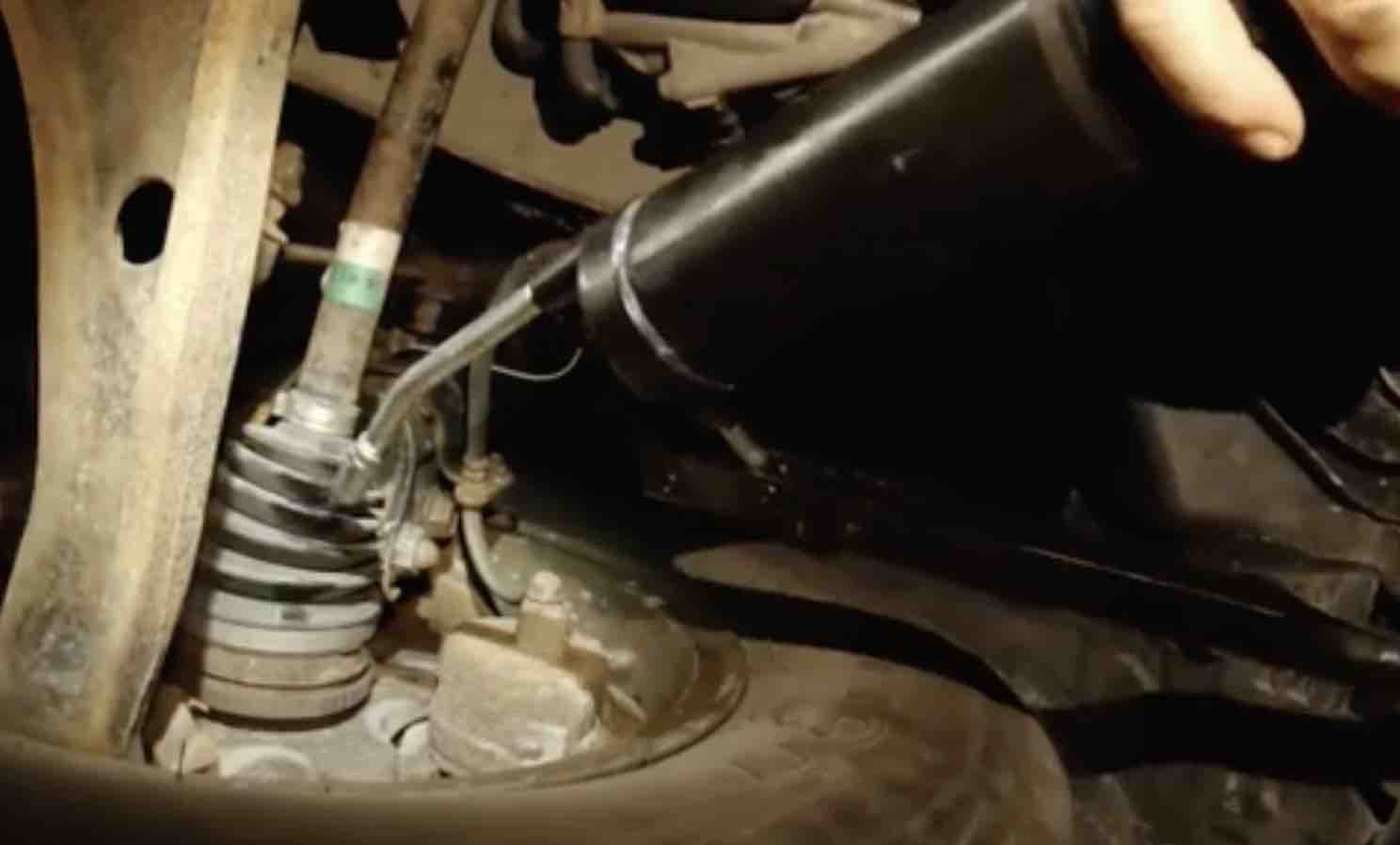Hearing a clicking from your car’s front end or a shudder when you accelerate? It could be your CV axles. These crucial parts deliver power to your wheels, and neglecting them can lead to costly repairs. But don’t worry! Regularly greasing your CV axles is a simple DIY job that can prevent leaks, extend their lifespan, and keep your ride smooth. This guide provides step-by-step instructions for various scenarios, ensuring you can confidently tackle this maintenance task.
Why Grease Your CV Axles?
CV joints, the flexible connections in your axles, allow your wheels to turn and move up and down simultaneously. Constant motion means friction, and that’s where grease comes in. It’s the lifeblood of your CV joints, reducing wear and tear like oil does for your engine. Greasing isn’t just a good idea; it’s essential for maximizing the lifespan of these components and avoiding expensive replacements. A little grease now saves a lot of money later. Curious about other maintenance aspects? Learn about how long does phentermine stay in system for a comprehensive understanding.
Spotting CV Joint Trouble
Identifying CV joint issues is usually straightforward. Clicking or popping, especially when turning, suggests a dry joint. Grease splattered inside your wheel well probably indicates a leaking boot, allowing dirt in and grease out. Regularly checking your CV boots is the best preventative measure.
Greasing Your CV Axles: A Comprehensive Guide
Using the correct grease is paramount. Regular chassis grease won’t cut it. You need specialized CV joint grease designed for high pressures and temperatures.
Scenario 1: Shrunken Boot
- Gather Supplies: Grease gun with needle attachment, CV joint grease, new CV boot clamp.
- Puncture the Boot: Carefully make a small hole with the needle.
- Inject Grease: Slowly pump grease until the boot plumps slightly. Avoid overfilling.
- Seal the Hole: Secure the puncture with the new clamp, like a tiny bandage.
Scenario 2: Dry Joint (Requires Axle Removal)
This involves removing the axle, so if you’re not mechanically inclined, consult a professional.
- Axle Removal: Follow your car’s repair manual.
- Disassembly: Carefully take the CV joint apart.
- Cleaning: Remove old grease and debris.
- Repacking: Fill the joint with fresh CV joint grease.
- Reassembly: Reassemble with a new boot and clamp.
- Reinstallation: Put the axle back in place.
Scenario 3: Leaky Joint – Minor Fix or Full Replacement
A slightly leaky boot might only need extra grease and a new clamp. A torn boot necessitates replacement.
- Boot Inspection: Torn? You’ll need a new one.
- Minor Leak?: If it’s small, try adding grease and a new clamp.
Scenario 4: Torn Boot – Full Replacement Required
- Axle Removal: As with a dry joint, remove the axle first.
- Boot Replacement: Use a CV boot kit.
- Clean and Repack: Clean the joint and repack with fresh grease.
- Reinstallation: Put everything back.
Choosing the Right Grease is Critical
Using the correct grease, specifically designed for CV joints, is like using the right oil in your engine – essential for proper function. The right grease lubricates and seals, protecting against high pressures and temperatures. Moly-based grease is often recommended for high-performance vehicles. Consult your car’s manual or a parts supplier for the right type.
The Spline Grease Debate
Some mechanics apply copper anti-seize to the axle splines during reassembly to prevent corrosion and ease future removal. While not mandatory, it’s a good preventative measure.
| Problem | Solution | Tools and Materials |
|---|---|---|
| Shrunken Boot | Inject grease, new clamp | Grease gun, CV joint grease, CV boot clamp, needle |
| Dry Joint | Remove axle, clean, repack, new boot and clamp | CV joint grease, CV boot kit, axle removal tools |
| Leaky Joint | Add grease, new clamp (if boot intact), replace if torn | CV joint grease, grease gun, CV boot clamp, CV boot kit (if needed) |
| Torn Boot | Replace boot, clean, repack | CV boot kit, CV joint grease, axle removal tools |
Preventative Maintenance Saves Money
A little grease and a few clamps are far cheaper than a new CV axle. Regular greasing is a small investment with big returns, preventing costly repairs and ensuring a smooth, safe ride.
Deep Dive into CV Joint Greasing
CV joints are the flexible elbows and knees of your axles, allowing smooth turning even over bumps. Due to constant motion, friction is their biggest enemy. Grease acts as a lubricant and protectant, essential for long life. Regular greasing is crucial, particularly during boot replacements.
If your boot is intact, regular inspection is still key. Look for wear, cracks, leaks, or shrinkage. Early detection prevents bigger problems.
Step-by-Step Greasing Guide
- Boot Check: Inspect for damage. Replace if compromised before greasing.
- Clean (If Needed): Clean the CV joint if the old boot was damaged.
- Grease Selection: Use only CV joint grease. Avoid molybdenum disulfide grease.
- Packing the Joint: Generously fill the joint, but avoid overfilling.
- Boot Security: Securely reattach or replace the CV boot with correct clamps.
Choosing the right, molybdenum disulfide-free grease, designed for CV joints, is vital. Each axle has inner and outer joints with different roles but similar greasing needs.
Troubleshooting Common Issues:
| Problem | Potential Solution |
|---|---|
| Clicking noise | Dry or damaged CV joint. Inspect, clean, regrease, or replace. |
| Grease leakage | Damaged boot. Replace and repack the joint. |
| Vibrations | Worn CV joint or other drivetrain issues. Investigate further. |
Regular maintenance is key. While this information is helpful, research and technology evolve. Consult a qualified mechanic for specific concerns.
Can You Over-Grease a CV Joint?
Yes, and it’s more common than you think. Too much grease restricts movement, leading to “hydraulic lock,” which can damage the joint internally. Excess grease stresses the boot, potentially causing tears and contamination. Use the correct amount – a thin, even layer – and type of grease, as specified in your car’s manual. Regularly inspect your CV boots for damage.
What Happens When a CV Axle Loses Grease?
CV joint grease provides crucial lubrication and protection. Grease loss increases friction and heat, accelerating wear and tear. Torn boots are the usual culprit, allowing grease leakage and contaminant entry. Clicking or popping noises, and vibrations, are warning signs. Ignoring these can lead to complete joint failure, a far more expensive repair than addressing a boot tear or grease leak early on. Regular CV boot inspection is essential preventative maintenance.
By following this guide, you’ll be well-equipped to keep your CV axles in top shape, saving money and ensuring a smooth ride. While this information is current, ongoing research suggests that CV joint technology and maintenance best practices are continually evolving.
- Unlocking 2-Letter Words with U: The Definitive Guide - April 4, 2025
- Unlock Words with the Letters THREE: Top Unscramble Tools 2025 - April 4, 2025
- Master Scrabble: X & Z Words for High Scores - April 4, 2025
















